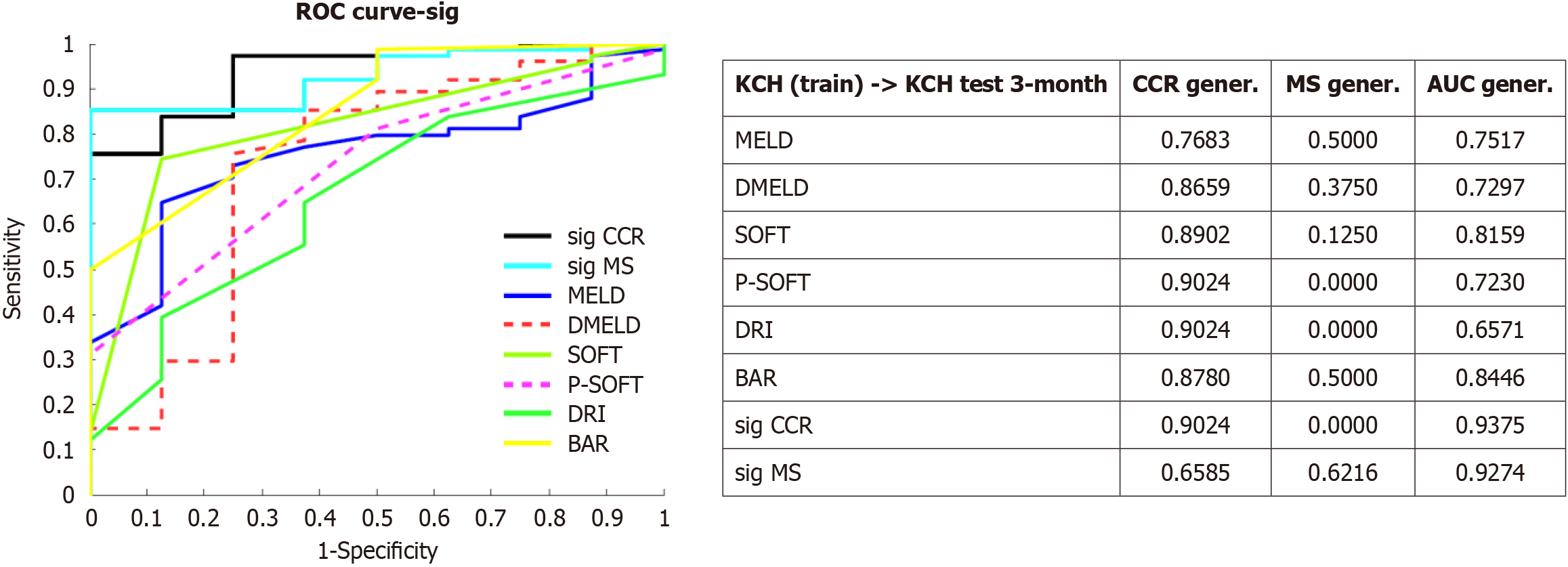Copyright
©The Author(s) 2024.
World J Clin Cases. Apr 26, 2024; 12(12): 2134-2137
Published online Apr 26, 2024. doi: 10.12998/wjcc.v12.i12.2134
Published online Apr 26, 2024. doi: 10.12998/wjcc.v12.i12.2134
Figure 1 External validation of artificial neural network models[13].
The performance obtained by these models is compared to other published score in terms of area under curve. A receiver operating characteristic curve depicts these metrics. Artificial neural network models based on the concept of minimum sensitivity and correct classification rate are represented such as sig minimum sensitivity and sig correct classification rate respectively. These models outperformed other traditional scores such as Model for End-Stage Liver Disease, Model for End-Stage Liver Disease score excluding exception points and donor age, Survival Outcomes Following Liver Transplantation, Preallocation Survival Outcomes Following Liver Transplantation, Donor Risk Index or Balance of Risk. CCR: Correct classification rate; MS: Minimum sensitivity; MELD: Model for End-Stage Liver Disease score; DMELD: Model for End-Stage Liver Disease score excluding exception points and donor age; SOFT: Survival Outcomes Following Liver Transplantation score; P-SOFT: Preallocation Survival Outcomes Following Liver Transplantation score; DRI: Donor Risk Index score; BAR: Balance of Risk score; AUC: Area under curve; KCH: Kings College Hospital; ROC: Receiver operating characteristic. Citation: Ayllón MD, Ciria R, Cruz-Ramírez M, Pérez-Ortiz M, Gómez I, Valente R, O'Grady J, de la Mata M, Hervás-Martínez C, Heaton ND, Briceño J. Validation of artificial neural networks as a methodology for donor-recipient matching for liver transplantation. Liver Transpl 2018; 24: 192-203. Copyright© The Authors 2018. Published by Wolters Kluwer Health, Inc.
- Citation: Calleja R, Durán M, Ayllón MD, Ciria R, Briceño J. Machine learning in liver surgery: Benefits and pitfalls. World J Clin Cases 2024; 12(12): 2134-2137
- URL: https://www.wjgnet.com/2307-8960/full/v12/i12/2134.htm
- DOI: https://dx.doi.org/10.12998/wjcc.v12.i12.2134









